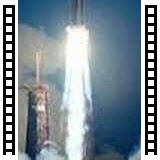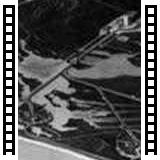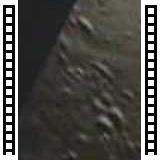Apollo 12 launched on schedule, during a rainstorm. 36.5 seconds after lift-off from Kennedy Space Center, the Saturn V rocket body was hit by a bolt of lightning. The Apollo 12 mission landed on an area of the Ocean of Storms that had been visited earlier by several unmanned missions (Luna 5, Surveyor 3, and Ranger 7). The International Astronomical Union, recognising this, christened this region Mare Cognitium (Known Sea). The landing site would thereafter be listed as Statio Cognitium on lunar maps. The second lunar landing was an exercise in precision targeting, using a Doppler Effect radar technique developed to allow the pinpoint landings needed for future Apollo missions. Most of the descent was automatic, with manual control assumed by Conrad during the final few hundred feet of descent. Unlike Apollo 11 where Neil Armstrong took manual control of the lander and directed it further down range when he noticed that the intended landing site was strewn with boulders, Apollo 12 succeeded, on 19 November, in landing within walking distance (less than 200 meters) of the Surveyor 3 probe, which had landed on the Moon in April 1967. To improve the quality of television pictures from the Moon, a colour camera was carried on Apollo 12 (unlike the monochrome camera that was used on Apollo 11). Unfortunately, when Bean carried the camera to the place near the lunar module where it was to be set up, he inadvertently pointed it directly into the Sun, destroying the vidicon tube ...







































